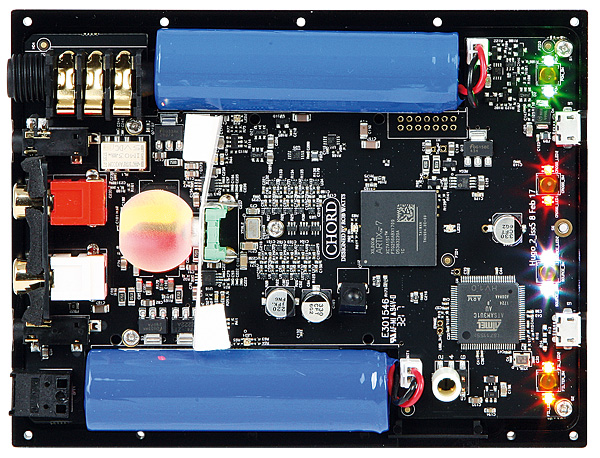Chord Hugo 2 headphone amp/DAC Page 2
Charging Rhythms
I spent some time experimenting with the four-step digital filter selector – Filter 01 is described as ‘Incisive Neutral’, 02 adds some HF roll-off, 03 is warmer and 04 again adds HF roll-off to 03 – but to little avail: yes, Filter 03 is handy to add some richness to brittle recordings, but in general I stuck to the Filter 01 setting for most of my listening [see PM’s Lab Report, p67].
On a bit of a vintage trip, I loaded up some – now deeply unfashionable – Genesis, in the form of 1972’s Foxtrot, in both CD and DSD64 versions [Virgin CASCDX 1058/Charisma 50999 519522 2 9], and greatly enjoyed the way the Hugo 2 charged out the rhythms of ‘Watcher Of The Skies’ and the twists and turns of the behemoth that is ‘Supper’s Ready’. Interestingly, listening through headphones – and in particular the Oppo PM-1s, which the little DAC/amp drove with ease – I found the crossfeed filter, which uses the DSP to ‘leak’ some sound between the channels, did a fine job in creating a more spatial, three-dimensional image, also offering a more ‘out of the head’ listening experience.
Yes, one can go too far with this, the crossfeed allowing minimal, medium and maximum settings – the last of these gets a bit too close to two-channel mono at times, but ‘min’ and ‘med’ are worth trying, especially if you find some music sounds a little too ‘left and right’ through headphones.
Thrilling Live Effect
The same applies when listening to highly atmospheric recordings such as Boston Baroque’s recently released set of Heinrich Biber’s 15 Mystery Sonatas [Linn CKD 501], where minimal use of the crossfeed can give a more enveloping effect through headphones without robbing the sound of any of its definition. That said, this 192kHz/24-bit recording does also sound magnificent when the Hugo 2 is used as ‘just a DAC’, with a wonderfully crisp string tone and having suitable reediness in the organ accompaniment.

But for real live ambience I switched to the recently released Esbjörn Svensson Trio e.s.t. Live In London album [ACT Music ACT 9042-2], where the resolution of the instruments is set against the ongoing presence of the audience to thrilling effect. This isn’t just great trio jazz with a bit of clapping at the end of each track, but has a real sense of an event about it, and that shines through via the Hugo 2, whether fed from a computer or via its coaxial input, and whether using headphones or employing the unit as a line source.
The spiky rhythms of ‘When God Created The Coffeebreak’ are well suited to the clean, pacey sound of the Chord Hugo 2. Svensson’s piano is given realistic weight and the tightly locked rhythm section of Dan Berglund on bass and the always wonderful Magnus Öström, Svensson’s childhood friend, on drums is at turns subtle and punchy, the skins pattering and Öström’s barrage of Zildjian cymbals crashing and shimmering as the track gains pace and attack.
It’s delicious stuff, wonderfully recorded at The Barbican hall back in 2005 and only just released, and a fitting tribute to the great pianist just ten years after his death in a scuba diving accident.
That’s the beauty of the Hugo 2: clean and precise it may be, but it also swings, rocks and motors, with never any sense of being overly analytical or the slightest hint of technical soullessness, making just about any style of music you choose to play through it sound both rewarding and captivating.
Yes, the revisions have brought with them a higher price, but they’ve also delivered a more flexible product with excellent futureproofing, a more logical operation and performance to delight, whether you choose to use it ‘on the go’, on the desktop or on your main equipment rack.
Hi-Fi News Verdict
With so many models on offer in its range, working out which Chord Electronics product is best for your needs might seem a little tricky. The Hugo 2 is a pretty simple answer to the question, performing as well as a portable headphone amp as it does as a main-system DAC. The redesign has added extra facilities to improve the listening experience, making it both a technological achievement and a sonic one.

























































